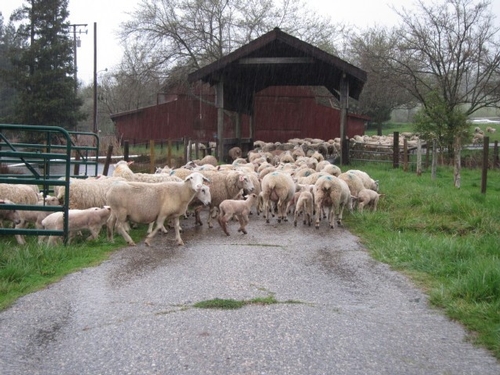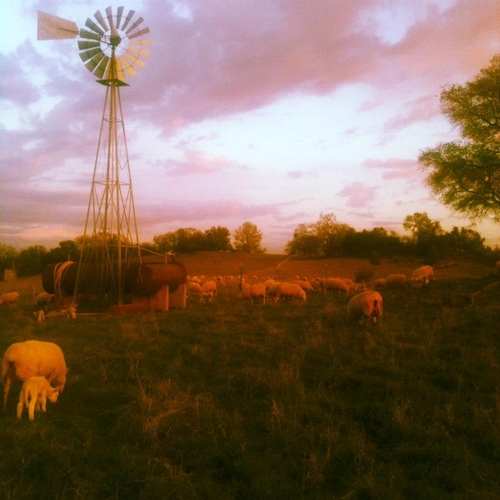Posts Tagged: lambing
Zen and the Art of Sheepherding
Over the years, I've come to realize that one of the principles of working or moving livestock is that I must move slowly to go fast. Every time I get in a hurry to get something done - loading sheep in the trailer or moving sheep through the corrals, for example - the job takes much longer than it would if I had the proper patience. The animals seem to sense my frantic energy, which makes them frantic, as well. Early on in my sheep ranching adventure, I was drawn to the stockmanship principles developed by Bud Williams. Bud once said that his system was focused on letting the animal do what he wanted them to do. When I'm quiet, my dogs are quiet as well - and the job goes quickly. I let the animals do what I want them to do!
This principle, I think, is especially applicable at lambing time. There is an art to lambing in a pasture (or really to any lambing system) that can only be learned by experience. Moving slowly - both in a physical sense and from the standpoint of watching and waiting - is critical during lambing season. A couple of examples:
- Several weeks ago, we moved the entire flock onto new pasture. A handful of 2-3 day-old lambs decided it would be great fun to stay back in the old pasture. Rather than try to catch them or chase them, I worked with Mo to quietly and slowly herd them ahead to the rest of the flock. Mo was incredibly patient - herding young lambs is worse than herding cats - and I tried to quietly help Mo follow his instincts. We finally got the lambs close enough to the new paddock that their mothers found them and led them the rest of the way.
- Late one afternoon, I came upon a lamb that didn't seem to have a mother. She was dried off and energetic, but her mother was nowhere to be found. I tried putting her with a ewe that had another lamb, thinking that perhaps she was a twin. The ewe ultimately rejected her, but I decided to leave her in the pasture until I came back for my evening rounds. She was still by herself when I returned, but I tried putting her with another ewe that had a single lamb. Bingo! The lamb was her missing twin, and when I left tonight both lambs were following her and nursing regularly.
- Yesterday, we moved all 190+ ewes and their lambs (well over 400 animals in total) about three quarters of a mile through three gates and onto fresh pasture. Without lambs, two dogs and one shepherd could accomplish this task in about 15 minutes. With lambs, it took us more than an hour – and the dogs and I even had two extra human helpers! When moving pairs (ewes with lambs), I’ve learned to go slowly and let the ewes double back to find their lambs. Had we tried to haul the animals rather than walk them, it would have taken all day (and been much more stressful on everyone).
Much of my time at lambing is spent waiting and watching - waiting for a ewe to deliver her lambs on her own or watching to make sure that a ewe has bonded with her lambs. If I move to quickly at this point, I risk disrupting the ewe-lamb bond by pulling a lamb or increasing my labor requirements by bringing a lamb home to be bottle raised. I’ve developed little ways to trick myself into waiting – if I come upon a ewe in labor, for example, I’ll force myself to go build fence before intervening. Going slow, in this case, means less work!




